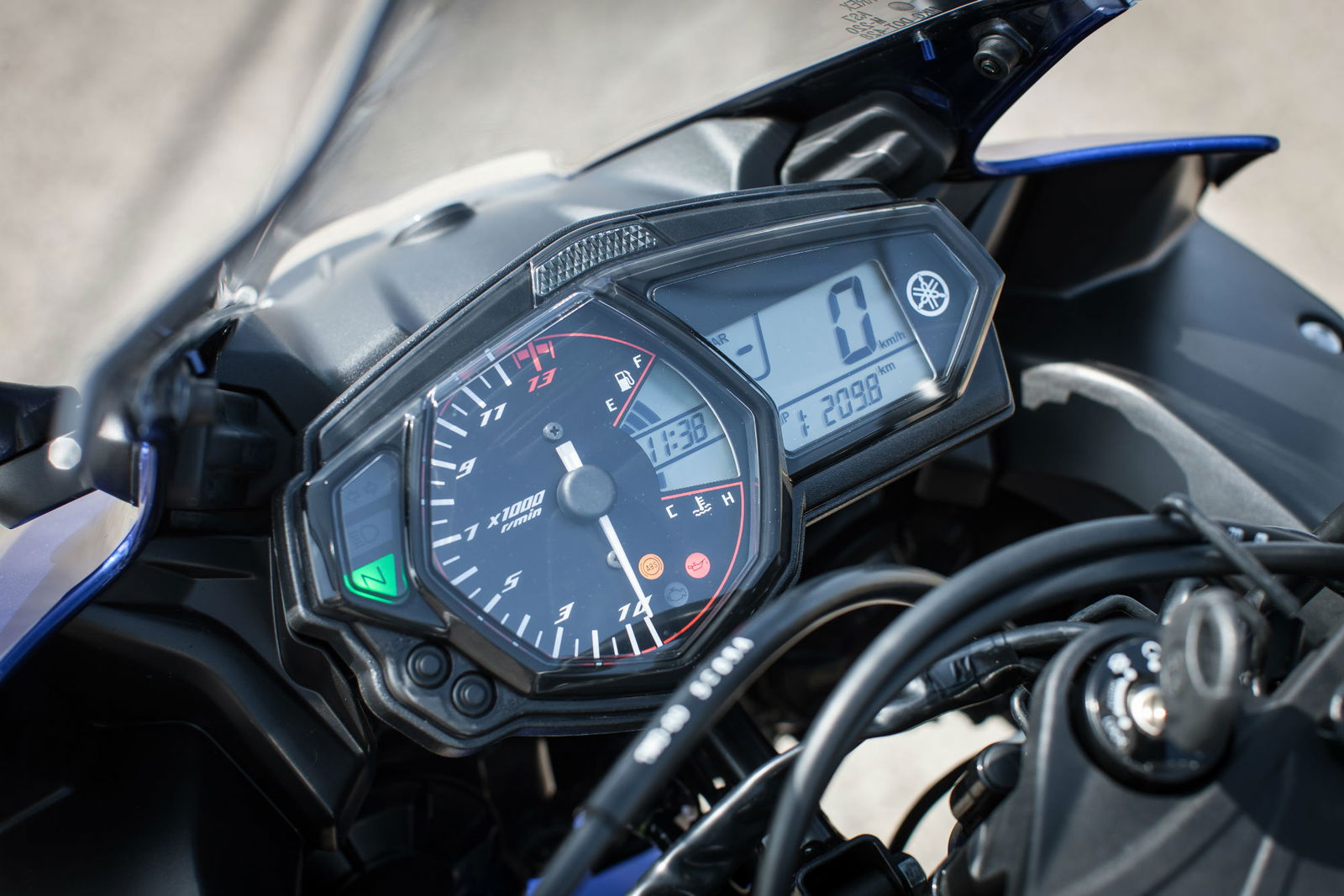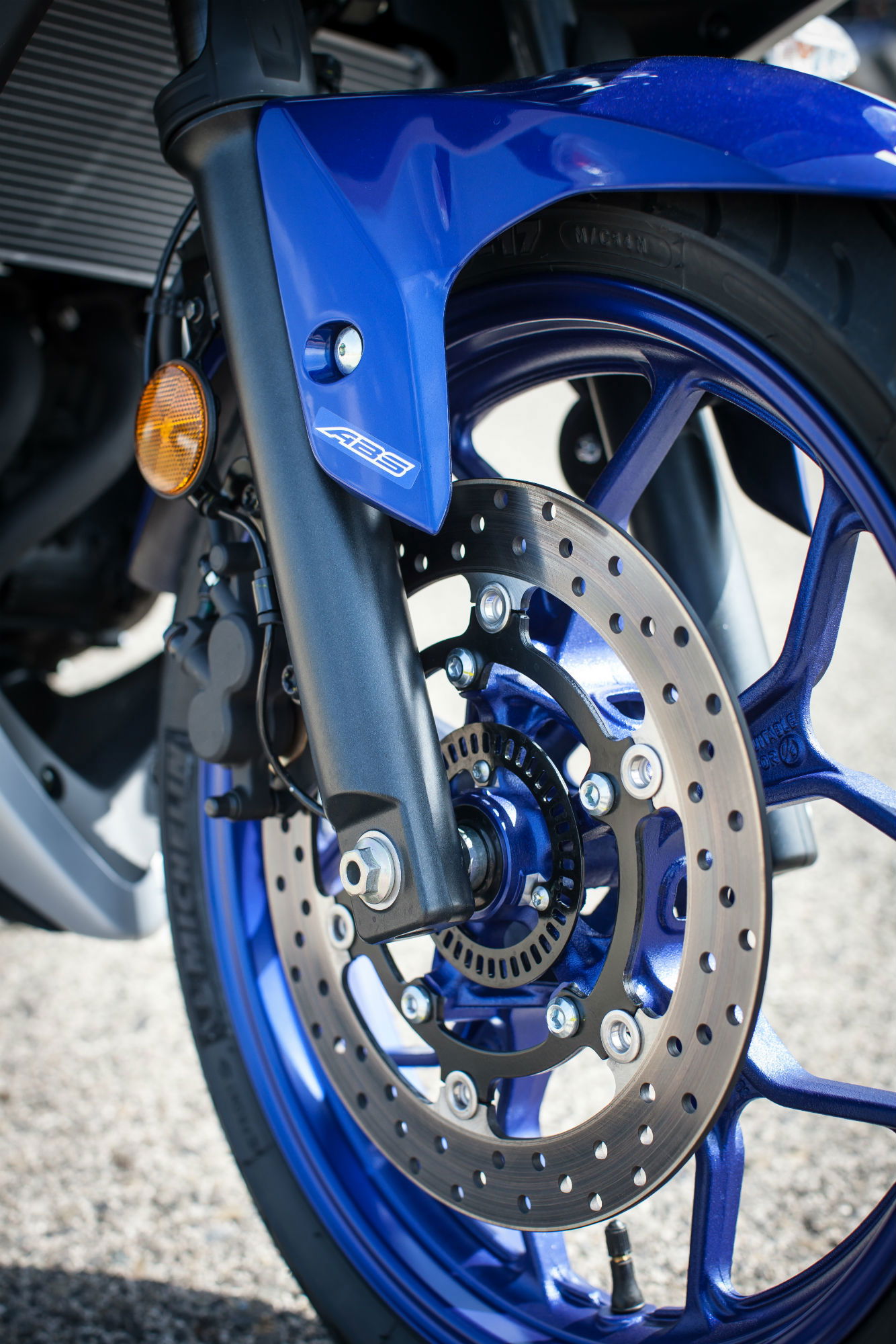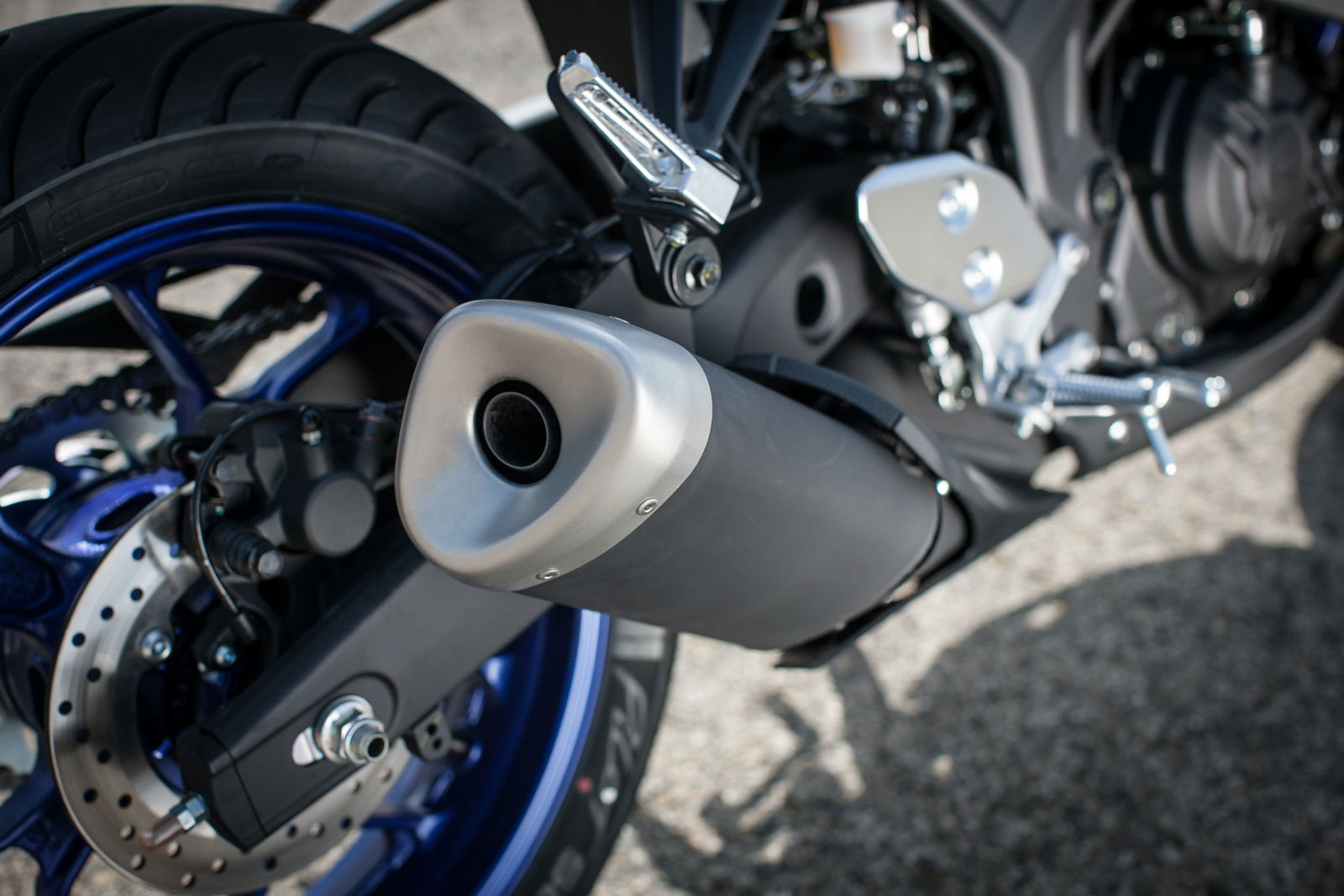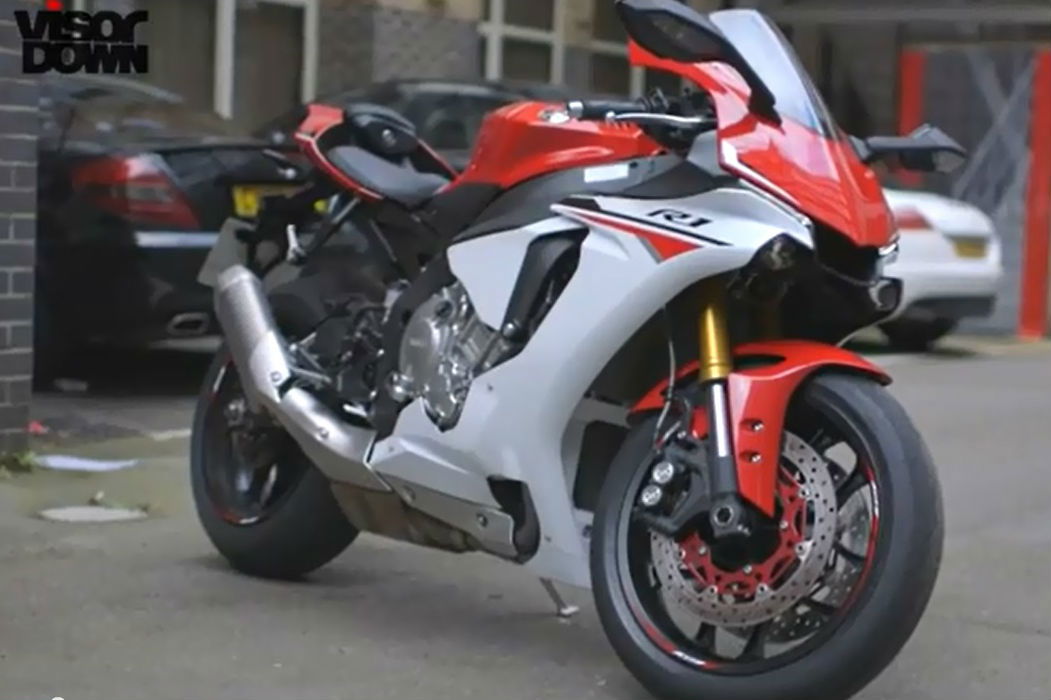First ride: Yamaha R3 review
Bikes under 500cc haven't been so exciting for decades


THERE'S a good feeling about motorcycling in 2015. Superbikes have gone silly again, smashing the 200hp barrier, sales are up for the first time in years and sub-500cc machines have become more exciting than they've been in decades.
That's because, instead of producing bikes simply to meet the 47hp A2 power limit, manufacturers are reviving the class with machines to desire whether or not you have a restricted licence.
Last year KTM gave us the fully-faired RC390, using the same frame and single-cylinder engine as the Duke 390.
This year Kawasaki introduced the Z300, a naked version of the excellent parallel-twin Ninja 300.
And now Yamaha has launched a new addition to its YZF-R sports bike family, the R3.
It's all new, with a parallel-twin engine of 321cc acting as a stressed member in a diamond-type steel frame. That gives it 25 more cubes than the 296cc Ninja and Z300, and five more horses, at 42hp compared to 37.
Of course it's A2-compliant but Yamaha is keen that it be seen as more than that. It is, the firm says, a 'supersport bike for everyday use,' whose target audience only 'includes A2 licence holders'.
That's because the market for bikes designed as A2 compliant is too small, with many riders choosing to get a more powerful machine and have it restricted. The R3 has to offer something for the more experienced too.
And it does. It's an eager, engaging little sports bike, with a revvy, flexible engine which is as useful and fun on the road as on track.
It felt effortless to control from the moment a wheel turned, like a bike I'd been riding for years rather than one I'd just swung a leg over for the first time at the press launch in Spain. A generous steering angle and high clip-on bars, mounted above the top yoke, make for super-easy low-speed manoeuvrebility.
The engine is revvy, with a satisfying top end. Peak power is at 10,750rpm and peak torque, of 21lbft, at 9,000. At 11,000 a white light illuminates at the top of the dash, telling you to change up, ahead of the red line and rev limiter at 12,500.
It doesn't feel quite as free-revving as the Ninja and Z300, which red-lines at 13,000, but that impression could simply be down to the R3's better spread of power across the range.
Where the Kawasakis sing at high revs, in what's not unlike a power-band, the R3 shares more of the character of a bigger-capacity engine. It pulls more strongly at 5,000rpm, letting you be generally lazier about what gear you're in, whether tackling corners or overtaking on the motorway.
In fourth gear at 5,000rpm, there's enough drive to sweep from one tight bend to the next on winding roads, and make good, smooth progress without changing down. That's until you see a slightly longer straight, at which point you'll definitely want to knock it down a gear and nail it.
The launch ride included a couple of brief stretches of motorway, where the R3 felt comfortable at high speed, without excessive vibration. Like KTM's RC390, it's got a more upright riding position than typical of sports bikes, and the R3 also still manages to provide an acceptable amount of wind protection, with a screen that widens toward the top. The riding position didn't feel cramped to me, at 5'9”, and I had no complaints about comfort all day.
Naturally, the ride also included miles of perfect twisty roads, near Tarragona on the Mediterranean coast. Here for the first time I felt I could do with a little more readily-accessible power from the single 298mm front brake disc and twin-pot caliper. As on KTM's RC390, the power is there but to find it I had to move my two fingers a little further out than usual along the lever, which isn't span-adjustable. Sometimes I'd already begun braking when that realisation dawned, by which point it was too late to change position.
But it's something any rider would adapt to, and with the extra leverage gained from using more of the lever, power is ample. Another journalist, who brakes using all his fingers, said he found no suck lack of bite.
The suspension, a KYB preload adjustable shock and non-adjustable right-way-up fork, is softer than the Z300's, which I tested only a couple of weeks ago. The R3 is better damped than the RC390, which is soft-ish and bouncy.
The Yamaha coped well on the carefully chosen, perfectly surfaced roads of the launch ride. I wonder whether it would acquit itself quite so well on the less well-maintained A-roads of the UK.
After the track-like roads, we hit some track-like track, with two 20-minute sessions at Circuit de Calafat, which is full of hairpins and ideal for exploiting the R3's strengths.
Claimed weight is 169kg with a full tank of fuel, and the R3 feels light enough to throw around like a toy but also consistently stable, whether nailing the brakes, driving through a corner or flat-out on straights. Top speed proved to be an indicated 176kph, or 109mph, where the R3 hit the rev limiter in sixth.
It's got a lower claimed power-to-weight ratio than the RC390 - which is more powerful, at 44hp, and lighter, at 166kg with fuel – but the R3 is a smoother experience, less about mid-range and more about a linear build to the top end. It's easy to thrash, using all the 42 horses most of the time with frequent changes through the slick gearbox.
Ground clearance was good, although Yamaha had removed the hero blobs from the test bikes' pegs.
The ABS, which comes as standard, activated a couple of times running into corners but otherwise I wasn't aware of it. When it did step in it was with relative subtlety.
A couple of times the Michelin Pilot Street rear tyre juddered sideways driving out of corners, but held on. It's not ideal rubber for this job, but coped. Stickier standard rubber would compromise Yamaha's ambition that the R3 be as good for city, long distance and 'every day' use as it is for getting a knee down.
It's an ambition which has been realised in the R3. Commute on it, thrash it, tackle longer distances on it. Race on it – Yamaha is planning a junior cup challenge.
Gain experience on it if you're an A2 licence holder. Cherish and enjoy it if you're not. It will do all these things.
Some parts don't look special. The steel swing-arm looks like it might be doing a half-hearted impression of cast aluminium, widening in the middle and tapering again toward the rear wheel axle.
The dash consists of a big rev-counter dial on the left of a digital speedometer, with a gear indicator, fuel gauge, current and average fuel consumption and an oil change indicator. It also has something of a that'll-do look about it.
For a city bike, I'd like space for a disc lock under the seat, and I'm not sure there is on the R3.
And the pressed steel gear selector and brake pedal look like they could have been borrowed from a budget commuter.
But the R3 is competitively priced, at £4,799 plus on-the-road charges, so Yamaha can be forgiven for making savings somewhere. It's a couple of hundred quid less than the RC390, and £100 less than the Ninja 300.
It doesn't seem such a lot of money for a motorcycle that, while A2 compliant, may be all the bike many of us need.
Watch our video review of the Yamaha R3
Model tested: Yamaha YZF-R3
Engine: 321cc parallel-twin
Price: £4,799 plus on-the-road charges
Power: 42hp @ 10,750 (30.9kw) 0.18kw per kg
Torque: 21.8lbft @ 9,000rpm
Wet weight: 169kg (with a full tank of fuel)
Tank capacity: 14 litres
Seat height: 780mm
Colours: blue, black
Availability: May 1





















